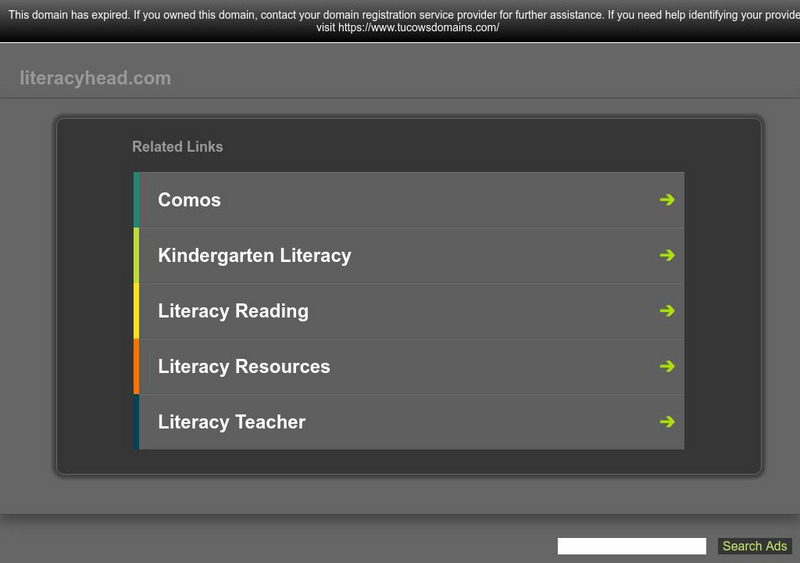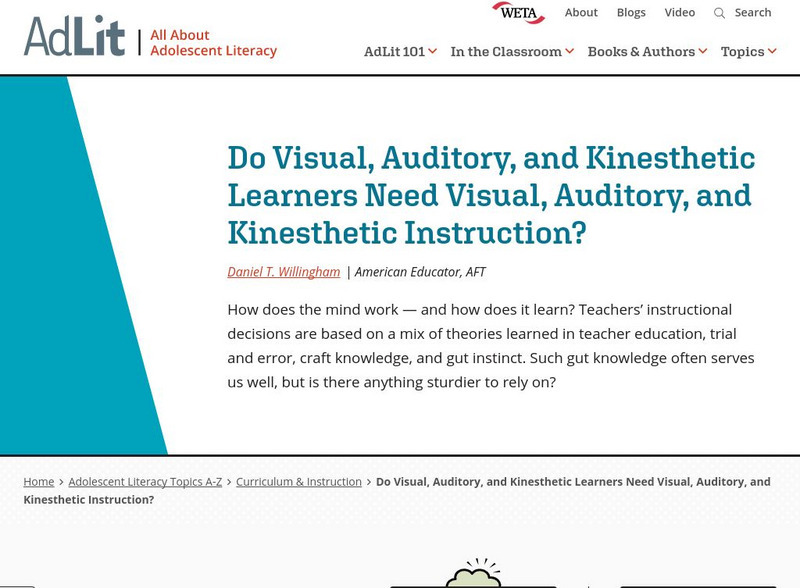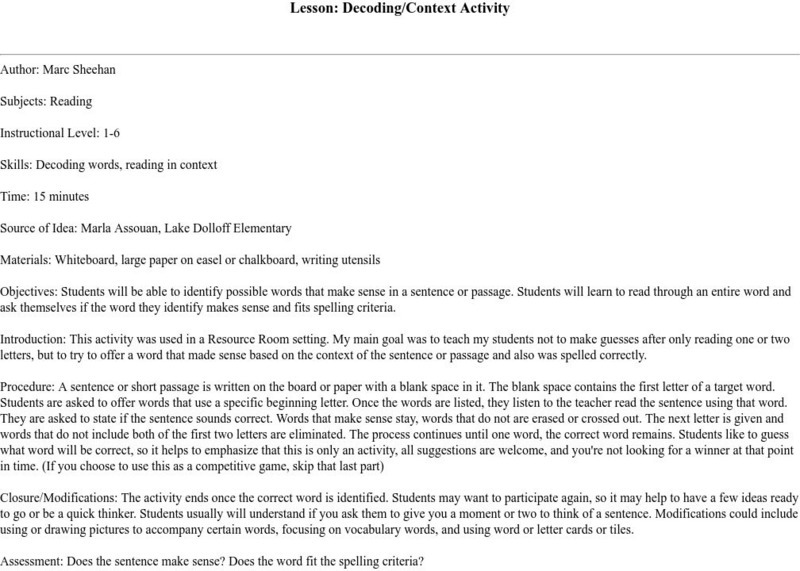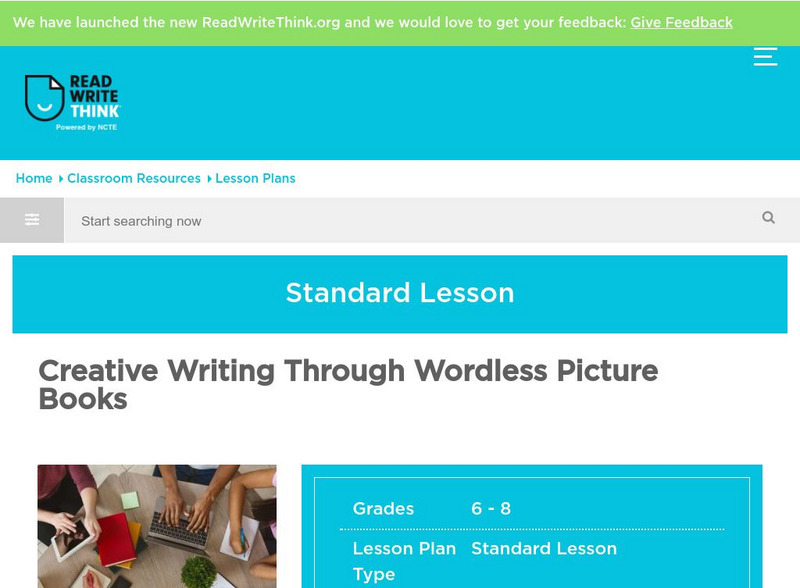Hi, what do you want to do?
Literacy Head
Literacyhead: Writing Prompts: Images to Give Writers Ideas: Family Stories
These images are intended to give students ideas for writing about their families by exploring the details of the art works.
Auburn University
Assessing Phoneme Awareness and Decoding
How do you assess phoneme awareness and decoding? Use this site to find the answer to this question on phoneme awareness and decoding.
Other
Balanced reading.com: Decoding
What is decoding? Use this site to find the answer to this important question. This website focuses on a balanced reading approach to learning.
Kidsource OnLine
Phonemic Awareness: Important Early Step to Reading
This site features an article that looks at the importance of phonemic awareness as an early step to learning to read. Teachers will benefit from the information presented within this article.
Auburn University
Auburn University: Using Decodable Text
How can you use decodable text in your classroom? This site offers insight into this necessary part of the reading process. Come and learn more.
AdLit
Ad lit.org: Do Learner Types Need in Style Instruction?
How does the mind work - and how does it learn? Teachers' instructional decisions are based on a mix of theories learned in teacher education, trial and error, craft knowledge, and gut instinct. Such gut knowledge often serves us well,...
AdLit
Ad lit.org: Classroom Strategies: Story Maps
Story Maps are used for teaching students to work with story structure for better comprehension. This technique uses visual representations to help students organize important elements of a story. Students learn to summarize the main...
Better Lesson
Better Lesson: Tie It Up With Transition Words to Write a Story!
Read, write, and present a digital narrative with transition words to help us put the events in order! After modeling the instructional activity, groups of students will write narratives to recount a short sequence of events, they will...
Better Lesson
Better Lesson: Listen to and Follow Directions: Day 2
One important aspect of the common core is to prepare students to be able to participate in conversations and contribute accurate and relevant information. In this lesson, students listening skills will evolve as they translate verbal...
Better Lesson
Better Lesson: Go Figure With Figurative Language It Helps With Predicting!
In this lesson, students will use figurative language, digital tools, and illustrations to write a story. The teacher will model how to use an app that has onomatopoeia to create a story with a good beginning, middle, and end. A video...
Other
Lesson Plan: Decoding: Context Activity
What does it mean to decode words in a context activity? Explore this lesson plan to find the answer to this question and more.
Other
Lesson Plan: Decoding: Context Activity
What does it mean to decode words in a context activity? Explore this lesson plan to find the answer to this question and more.
ReadWriteThink
Read Write Think: Creative Writing Through Wordless Picture Books
Need help planning ways to creatively teach your students chronological order? Here's a great place to start. While the site is specifically geared toward the middle school student, it is a teaching idea which could easily be adapted for...
Scholastic
Scholastic: 100 Ways to Use Digital Cameras
This resource presents 100 different ways to use a digital camera in the classroom.
Better Lesson
Better Lesson: Sl.4.2: Pose an Respond to Specific Questions
Links to 38 lessons and activities that build student skills in standard SL.4.2: Pose and respond to specific questions to clarify or follow up on information and make comments that contribute to the discussion and link to the remarks of...

















